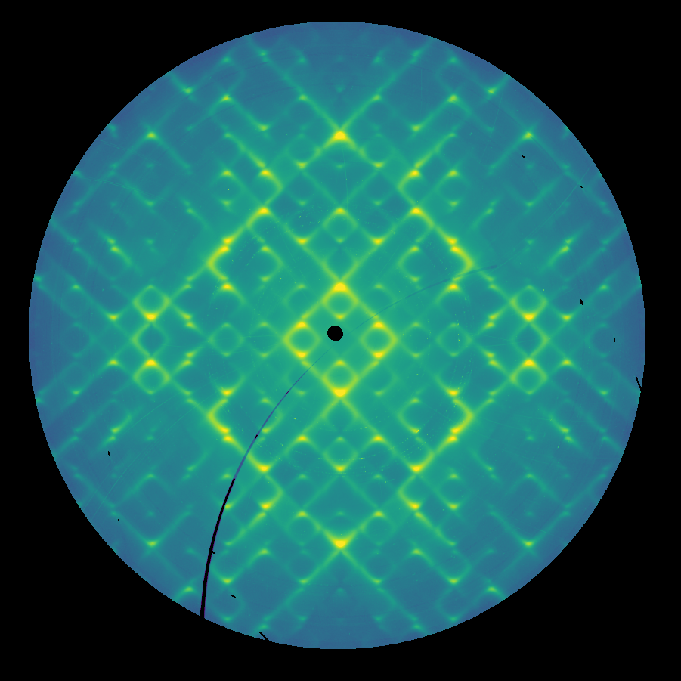NXRefine¶
Recent advances in synchrotron x-ray instrumentation have enabled the rapid acquisition of x-ray diffraction data from single crystals, allowing large contiguous volumes of scattering in reciprocal space to be collected in a matter of minutes. Typically, the sample is rotated continuously in a monochromatic beam while images are collected on a fast area detector. These images are stacked into three-dimensional arrays and transformed from detector coordinates to reciprocal space coordinates, using an orientation matrix derived from the measured Bragg peaks.
NXRefine implements a complete workflow for both data acquisition and reduction of single crystal x-ray scattering. Workflows developed for crystallography typically have the goal of generating Bragg peak intensities used to determine the average crystalline structure, but the goal of NXRefine is to produce a three-dimensional mesh of scattering intensity in reciprocal space that includes both Bragg peaks and the diffuse scattering that arises from deviations from the average structure. The workflow also generates three-dimensional pair-distribution-function maps (PDFs), both total PDF and 3D-ΔPDF, to determine interatomic vector probabilities in real space.
The workflow is written as a set of Python modules that can either be run from the command line, launched from a GUI that is implemented as a plugin to NeXpy, or by submitting jobs to a batch queue. After the initial refinement of the sample orientation, the entire workflow can be run in an automated fashion, while the data is being collected so that reduced data is available for inspection before a set of measurements, e.g., as a function of temperature, are complete.
